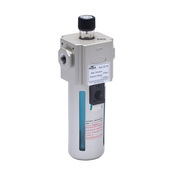 Cookies are not enabled on your browser.
Cookies are not enabled on your browser.Cookies are required for our site. Please enable cookies in your browser preferences to continue.
- Barcode / RFID / Vision
- Bulk Wire & Cable
- Cables (Terminated)
- Circuit Protection / Fuses / Disconnects
- Communications
- Drives & Soft Starters
- Enclosure Thermal Management & Lights
- Enclosures & Racks
- Field I/O
- HMI (Human Machine Interface)
- Hydraulic Components
- Motion Control
- Motor Controls
- Motors
- Pneumatic Components
- Power Products (Electrical)
- Power Transmission (Mechanical)
- Process Control & Measurement
- Programmable Controllers
- Pushbuttons / Switches / Indicators
- Relays / Timers
- Safety
- Sensors / Encoders
- Stacklights
- Structural Frames / Rails
- Tools & Test Equipment
- Valves
- Water (Potable) Components
- Wire & Cable Management
- Wire & Cable Termination
- Retired Products
Configuration Utilities
- PLC Family Selector
- P1000 PLC Systems
- P2000 PLC Systems
- P3000 PLC Systems
- ProductivityCODESYS
- CLICK PLC Systems
- Do-more® BRX PLC Systems
- LS-Electric® XGB PLC Systems
- Productivity®Open Systems
- Datalogic® Safety Light Curtains
- LS-Electric® Servo Systems
- Nitra® Pneumatic Grippers
- Object Detection (Sensors)
- PAL Controller Configurator
- Precision Gearbox Selector
- Protos X® Field I/O
- Pyrometers Selector
- Quadritalia® Modular Enclosures
- Stellar® Soft Starters
- Stepper System Selector
- SureFrame T-slot Extrusion
- SureMotion® XYZ Gantry
- SureServo2® System Selector
- SureStep® Linear Actuators
- Timing Belts & Pulleys
- Werma® Stacklights
- ZIPLinks
Lubricators
If needed, a lubricator is installed downstream of the regulator. Where lubrication is provided, all downstream pneumatic components will be lubricated. In this case be sure to match the port size of the upstream regulator to maintain proper air flow. Branch an air line from the main supply and use a smaller lubricator if only a few components need lubrication.
You might not need lubrication, really!
Many of today's pneumatic devices (such as our NITRA valves and cylinders) don't require lubrication, but high-speed pneumatic power tools often do, so check the manufacturers' recommendations. Devices that do need lubrication typically call for a light-weight non-detergent oil such as SAE 10, ISO VG32, or equivalent, but again - check the manufacturers specs.
How they work:
A mist-type air lubricator creates a fog of oil vapor via an oil drip, an adjustable needle valve and ejector nozzle, and it should be mounted close to the pneumatic devices to be lubricated. Also note that the oil mist does not travel upwards very well, so mount the lubricator above the components that require lubrication. Route hoses and tubing carefully to avoid creating a 'trap'.
How much?
Lubricators are available in a variety of port sizes to match other air prep components, and the rate of lubrication is adjustable. Due to differing lubrication rates, the bowls are also available in several sizes to store more oil as needed. When the sight gauge indicates low oil level, more oil can be added while the lubricator is pressurized.

Pneumatic air supply lubrication can increase speed, slow wear and reduce leakage in and around operating components. Lubricators are typically required for air-operated hand tools such as grinders, impact wrenches etc. Pneumatic mist type air lubricators are available in many port sizes and with lubrication rate adjustment and sight gauge.
Check out our job openings
Free Online PLC Training
FREE Video Tutorials
FREE e-Newsletter
Automation Notebook
Product Literature
White Papers
News, Product and Training Bulletins
E-Books
 Safe &
Secure
Safe &
Secure

We accept VISA, MasterCard, Discover, American Express, PayPal or company purchase orders.
Voted #1 mid-sized employer in Atlanta
Check out our
job openings

